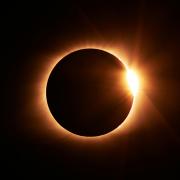
Henk, Isha, Jocelyn. If these names sound familiar, then you know what this is going to be about. Since 27th September 2023 – 24th January 2024, there have been 10 storms that have terrorised the UK, followed by devasting consequences.
Storm Henk, which pummelled Britain recently caused approximately £150 million pounds in insured losses and damaged around 2,000 properties. Heavy rainfall caused major rivers to burst their banks and more than 300 flood warnings were issued by the government not long after Storm Babet which caused major flooding. Even after this catastrophic event, it was predicted that more heavy rains, more flooding, more storms were to follow shortly. And follow, they did! Soon after, Isha came, felled trees and demolished building between 21st - 22nd January 2024. And then Jocelyn between 23rd - 24th January 2024 – just 1 day later! Apart from the destructive natures of the storms and the damage it brought, the only thing common about these frequent storms is the cause of it, which is climate change.
UK on average gets 7 storms a year, but this recent and concerning data about storms begs to differ. Scientific data has shown that the cause of the recent storms is the jet stream. There are 2 jet streams: one in Northern hemisphere and the other in Southern hemisphere. The jet stream consists currents of fast flowing air and the northern jet stream is currently directly over the UK. It is carrying low pressure systems into and over the Atlantic. A low-pressure system is when the atmospheric pressure is lower than the pressure of surrounding locations. A result of this, the surrounding air starts to flow inwards trying to equalize the pressure, which creates the high-speed winds and storms. Studies have already linked climate change to high-intensity weather events, such as storms, floods, droughts and wildfires. Storms are becoming more intense, because warmer sea surface temperatures which are increase wind speeds.
It is feared that many more storms like this and other extreme weather events will become even more frequent in the coming years, unless we can put a stop to or at least reduce damaging our environment. It is said that global warming is at the root of all these extreme weather events and all of us need to consciously try our best to help reduce global warming by reducing our carbon footprints. As called for in the Paris Agreement, the aim is to keep global warming to no more than 1.5°C and that emissions need to be reduced by 45% by 2030 and reach net zero by 2050. All of us, as individuals, organisations or governments need to play a part in this stiff but unavoidable target, so that all of us can leave a sustainable and thriving environment to our next generation.
Or I suppose, storm Kathleen will be on her way very soon!



























